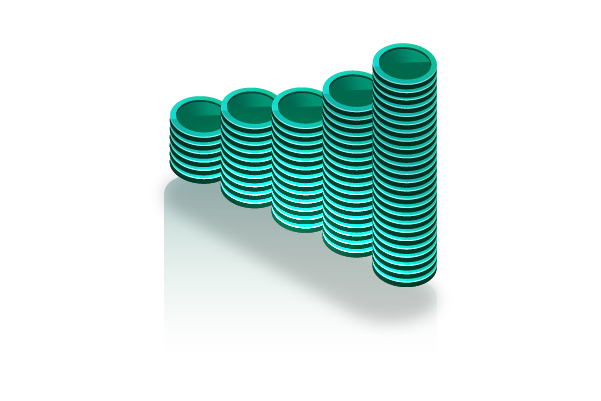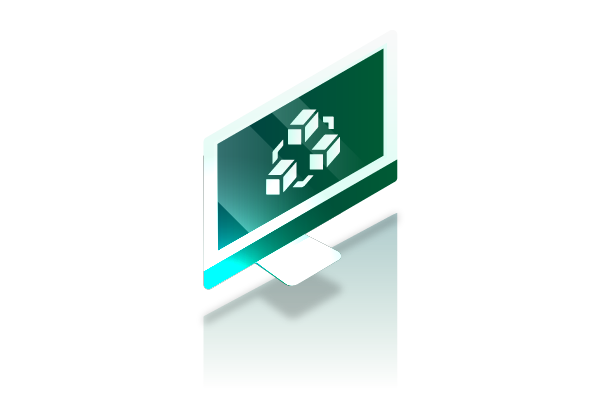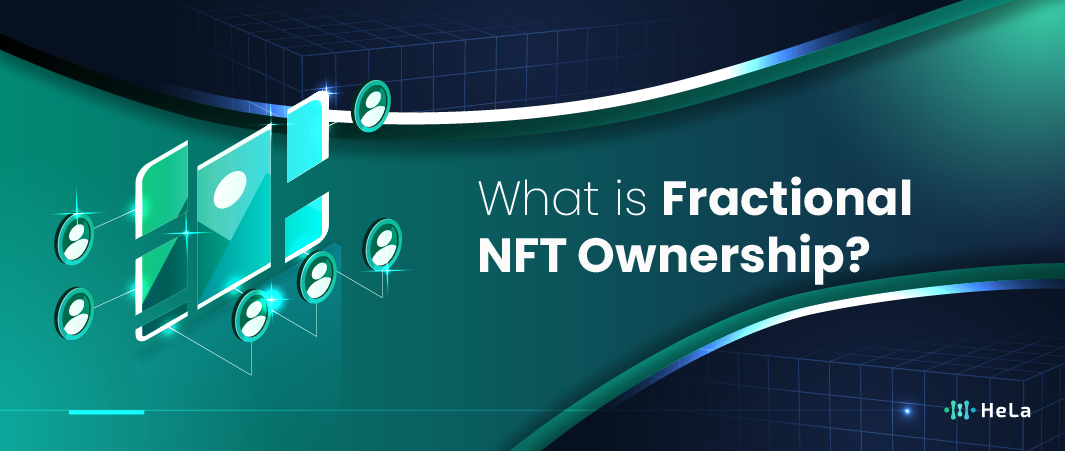Fractional NFT Ownershipas as a new way to own digital essets easily and affordably. This concept allows anyone to own a portion of high-value digital assets without having to purchase the entire item. Using blockchain technology and smart contract systems, expensive NFTs can be divided into smaller pieces called fractional NFTs. This makes ownership of digital assets like artworks, virtual real estate, and rare collectibles more inclusive and affordable. This article will provide a detailed explanation of how fractional NFTs work, the steps to purchase them, as well as the benefits and challenges to consider before you start investing.
Moreover, we will discuss various interesting uses of fractional ownership, ranging from the art world to financing creative projects on the blockchain. If you are interested in the latest innovations in the digital realm, understanding how fractional NFT ownership operates will open the door to new investment opportunities with risks and rewards to consider. Read this article to the end, as you will gain a comprehensive and practical guide to getting started, along with deep insights into how to participate in the ownership of digital assets more affordably.
What is Fractional NFT Ownership?

Fractional NFT Ownership is a concept that allows an individual to own a portion of an NFT (Non-Fungible Token), rather than owning the entire digital asset itself. This solves the issue of accessibility to NFTs, which are often priced extremely high. For example, well-known digital artwork or virtual properties can be worth millions of dollars. With fractional ownership, these assets can be divided into smaller portions, similar to shares, and individuals can purchase a “slice” of the NFT according to their budget. This provides more people with the opportunity to participate in owning digital assets that were previously only accessible to those with significant capital.
The primary benefit of fractional NFT ownership is higher liquidity. Traditionally, NFTs have been less liquid, meaning they are difficult to sell quickly without finding the right buyer. By dividing them into smaller parts, more people can get involved, making it easier to trade fractions of an NFT in the market. Buyers no longer need to purchase the entire asset at full price. Additionally, fractional ownership allows holders to retain partial control while still benefiting from selling part of their ownership stake.
However, there are also challenges. One of these is the issue of voting rights or control over the asset. Who has the authority to decide what happens to the NFT? In some cases, smart contracts can be used to govern how decisions related to the NFT are made, based on the ownership portions. Another challenge is regulation. Fractional NFT ownership resembles a shareholding system, which could raise legal concerns related to securities laws in certain countries. Since this technology is still relatively new, many legal aspects are not yet fully defined, which could pose challenges in the future.
Overall, fractional NFT ownership is an exciting advancement in the world of blockchain and digital assets. It provides broader access for individuals to participate in NFT investments and opens up new opportunities in the digital marketplace. However, like any new innovation, it’s important to understand the risks and challenges that may arise. As the technology continues to develop, regulations and market structures will likely mature over time, offering greater stability and clarity for all parties involved.
How Does Fractional NFT Ownership Works?

The way Fractional NFTs (F-NFTs) work begins with the process of “fractionalization” of a digital asset. Fractionalization happens when the original NFT owner divides the asset into smaller parts, allowing many people to own a portion of that NFT. This is usually done using smart contracts on the blockchain, where the NFT is wrapped as an ERC-721 token (the standard for NFTs) and then divided into smaller ERC-20 units. Each ERC-20 token represents partial ownership of the NFT, enabling multiple people to buy and sell their portions in the market.
Once the NFT is split into smaller parts, each partial owner (through the ERC-20 tokens) can trade their share easily on various exchanges or decentralized finance (DeFi) platforms. Liquidity is higher because the price of owning a fraction of an NFT is far more affordable compared to buying the entire NFT. The buying and selling process of F-NFTs works similarly to the stock market. Small share owners can sell, buy, or trade their tokens, with the market price continuously fluctuating based on demand and supply.
However, an important aspect of how F-NFTs work is the concept of ownership and control. While someone may own a small fraction of the NFT, it doesn’t mean they have full control over decisions regarding the NFT, such as how the artwork is used or what happens to the asset. These decisions are usually determined by the majority owner or handled through smart contract mechanisms that may include voting by F-NFT holders based on the number of tokens they own. In other words, the more shares someone holds, the greater their influence in decision-making.
Also Read: Fractionalized NFTs: The Benefits and Risks
In the end, fractional NFTs make high-value digital assets more accessible to a larger audience. They serve as a more democratic way to own digital art, collectibles, or other virtual assets. However, it’s important to understand that while this concept is very appealing, there are still challenges related to regulation, security, and control rights that need to be addressed. With technological advancement and broader adoption, fractional NFTs could open new ways to invest in the digital world.
Step-by-Step Process of Fractional NFT Ownership

Buying Fractional NFTs (F-NFTs) can seem a bit technical at first, but with a clear understanding of the process, it becomes much more accessible. Essentially, it allows you to own a piece of a high-value digital asset, like an NFT, without needing to purchase the entire thing. Here’s a more detailed, step-by-step guide on how to buy Fractional NFTs, using easy-to-understand language, to help you navigate the process from start to finish:
1. Choose an NFT Platform that Supports Fractional Ownership
The first step to buying Fractional NFTs is choosing a reliable platform that supports NFT fractionalization. Popular options include Unic.ly, Fractional.art, and DAOs, which are designed to split high-value NFTs into smaller, purchasable shares.
When selecting a platform, it’s crucial to check its reputation by reviewing user feedback and security certifications. Some platforms may require account registration, while others allow direct connection with a crypto wallet. Ensure you use a verified platform to avoid potential fraud, as the NFT and cryptocurrency space can be risky for newcomers.
2. Set Up a Crypto Wallet (Crypto Wallet Preparation)
After selecting a platform, the next step is to set up a compatible crypto wallet, usually one that supports Ethereum (ETH), as most fractional NFTs are built on the Ethereum blockchain. Popular wallets include MetaMask and Trust Wallet. Setting up a wallet is simple: download the chosen wallet, follow the installation instructions, and secure it with a private key or seed phrase, which is essential for recovering access if needed.
Once your wallet is ready, you’ll need to fund it with cryptocurrency. Purchase ETH from a crypto exchange like Coinbase or Binance, and transfer it to your wallet address. This ETH will be used for buying fractional NFTs and paying transaction fees, known as “gas fees.”
3. Search for and Select the Fractional NFT You Want to Buy
Now that your platform and wallet are set up, you can start browsing for the Fractional NFT (F-NFT) you wish to invest in. F-NFTs are typically linked to high-value assets like digital art, rare collectibles, or virtual real estate in the Metaverse. Each F-NFT provides essential details, such as the percentage of the NFT being sold, the price per ERC-20 token, and information about the original NFT, including the artist, creation date, and historical sales data.
When exploring different F-NFT options, it’s crucial to conduct thorough research. Consider the artist’s reputation, the asset’s rarity, and market demand. For digital art, check the artist’s previous sales, for virtual real estate, investigate the popularity of the hosting platform, like Decentraland or The Sandbox. After evaluating your options, select the F-NFT that aligns with your investment goals. Decide how many tokens you want to purchase, keeping in mind that a larger stake grants you more influence over NFT-related decisions.
4. Complete the Payment and Store Your ERC-20 Tokens
After deciding how much of the Fractional NFT (F-NFT) you want to buy, you can finalize the transaction by following the platform’s purchasing process. This typically involves connecting your crypto wallet to the platform, which will automatically calculate the total cost based on the number of tokens you’re purchasing and display the required amount of ETH for payment.
Once the transaction is confirmed and payment is completed, your ownership will be represented by ERC-20 tokens sent directly to your wallet. These tokens serve as proof of ownership and can be securely stored in your crypto wallet. You can hold these tokens indefinitely, and if the value of the original NFT increases, so may the value of your tokens.
Benefits of Fractional NFT Ownership

Fractional NFT ownership offers several compelling benefits that can make investing in digital assets more affordable and flexible. Here are Some Benefits of Fractional NFT Ownership:
Access to High-Value Assets
One of the biggest advantages of fractional NFT ownership is that it allows many people to own a portion of high-value NFTs. For example, digital art or collectible NFTs that are typically sold at extremely high prices can now be owned in smaller pieces.
You don’t need to spend millions of dollars to acquire an NFT. Instead, you can buy a small fraction that fits your budget. This opens up opportunities for more people to enter a market that was previously accessible only to wealthy investors.
Better Liquidity
Traditionally, NFTs can be difficult to sell quickly, especially high-value ones because only a few people can afford to buy them. However, with fractional ownership, liquidity increases.
Since NFTs are divided into smaller parts, more people can buy and sell shares of the NFT in the market. This makes NFTs easier to trade, similar to stocks, allowing fractional owners to cash out their investments more easily.
Also Read: Top 10 NFT Development to Consider in 2024
Portfolio Diversification
Fractional NFT ownership allows you to diversify your investments without needing a large capital outlay. Instead of buying one expensive NFT, you can spread your investments across multiple NFTs in different categories, such as art, collectibles, or virtual real estate.
This diversification can help reduce risk, as if one asset declines in value, you still have other assets that may remain stable or even increase.
Potential for Gains from Rising Value
Like NFTs as a whole, fractional NFTs also have the potential to increase in value as demand in the market grows. If you own a small portion of a high-value NFT and the price of that NFT rises, the value of your share also increases.
You can sell your share for a profit without waiting for the entire NFT to be sold by its main owner. This provides greater flexibility and profit opportunities for investors.
Challenges in Fractional NFT Ownership

Although Fractional NFT ownership sounds appealing, there are several challenges you need to understand before diving in. These challenges are important to consider so that you can make wiser investment decisions. Here are Some Challenges in Fractional NFT Ownership :
Regulatory and Legal Issues
Fractional NFT ownership brings significant challenges in terms of regulation. Since the concept is similar to stock ownership, many countries may classify it as a security, which means it must follow the strict rules that apply to the stock market.
Securities laws vary by country, and in many cases, the rules regarding NFTs and fractional ownership are not yet fully clear. This lack of definitive regulation can pose a risk to investors, as laws can change at any time and affect the value or liquidity of F-NFTs.
Control Rights and Decision-Making
One practical challenge in fractional NFT ownership is how control rights over the NFT are managed. If you own only a small fraction of an NFT, you may not have a say in important decisions regarding the NFT, such as its sale, use, or how it is utilized.
These decisions are often left to the majority owner or determined through smart contract mechanisms, which may not always favor small holders. This can lead to frustration if you feel excluded from decisions that impact the value of the asset you own.
Market Volatility and Value
Like the crypto and NFT markets in general, fractional NFTs are also highly susceptible to volatility. The value of an NFT can rise and fall dramatically in a short period, depending on market trends, the asset’s popularity, or fluctuations in the underlying crypto prices.
For investors holding F-NFTs, this means the risk of losing value quickly. While there are opportunities for significant profits, this high volatility can also lead to substantial losses, especially for those unfamiliar with the dynamics of the crypto market.
Limited Liquidity in Secondary Markets
While fractional ownership increases liquidity compared to full NFT ownership, there are still challenges related to liquidity in secondary markets. It is not always easy to find buyers interested in purchasing a small fraction of a particular NFT.
Additionally, the price of NFT shares can vary depending on supply and demand, making it take longer to sell an F-NFT or even unprofitable if the market is down.
Use Cases for Fractional NFT Ownership

Fractional NFT Ownership opens up numerous opportunities and applications across various fields. This concept is not just about owning a part of a digital artwork but can be applied in many exciting ways. Here are Some Use Cases for Fractional NFT Ownership:
Digital Art
One of the most popular use cases for fractional ownership is in the world of digital art. Many NFT artworks are sold for astronomical prices, making them accessible only to a few wealthy individuals.
With fractional ownership, these artworks can be broken into smaller pieces, allowing more people to own a “fraction” of the piece. For example, works by famous artists like Beeple or Pak can be divided into thousands of pieces, and anyone can buy a small portion of the artwork without spending a fortune.
Virtual Real Estate in the Metaverse
As the virtual world, such as the Metaverse, grows, digital properties are becoming highly valuable assets. Land or buildings in the Metaverse, like Decentraland or The Sandbox, can be sold as NFTs. However, the property prices can be very high. Fractional ownership allows people to own part of this virtual real estate.
For example, you could own a small share of a building or land in the Metaverse without having to buy the entire property. This makes investing in the virtual world more affordable and opens up broader participation opportunities.
Rare Collectibles
Beyond art and virtual real estate, fractional ownership can also be applied to digital collectible items like sports cards, action figures, or digital memorabilia. A digital card of a soccer player, for instance, can be sold as an NFT and then divided into smaller portions.
Fans who can’t afford the entire card can own a fraction of it. This makes digital collectibles more inclusive, allowing many people to own valuable items that were previously out of their reach.
Creative Project Funding and DAOs
Fractional NFTs can also be used to fund creative projects or support DAOs (Decentralized Autonomous Organizations). For example, an artist or project developer can create an NFT and split its ownership among investors in the form of F-NFTs.
These investors then own a portion of the project and can profit if the project succeeds. DAOs, often operating on blockchain, can use fractional ownership to distribute ownership or voting power among members. This enables collective decision-making based on their ownership shares.
Conclusion
Fractional NFT Ownership: A New Way to Own Digital Assets Easily and Affordably offers an innovative solution for anyone looking to own a piece of high-value NFTs without having to pay the full price. By dividing ownership into small portions, this concept opens broader access to digital assets such as art, virtual real estate, and collectible items. Through a straightforward process, from selecting a platform to storing tokens, fractional NFTs provide new opportunities for both beginner and professional investors to diversify their portfolios. While there are challenges such as regulatory issues, control rights, and market volatility, fractional ownership remains appealing as it enhances liquidity and opens access to a more inclusive NFT world.
Ultimately, fractional NFTs not only make it easier for people to invest in digital assets but also create opportunities to participate in creative projects and innovations on the blockchain. By understanding how they work, the steps to purchase, as well as the benefits and risks, you can be better prepared to make smart investment decisions. Fractional NFT ownership truly offers a chance for anyone to be part of the ever-evolving digital ecosystem. So, if you’re interested in entering the NFT world, fractional ownership is a worthy option to consider for more flexible and affordable investment.
Disclaimer: The information provided by HeLa Labs in this article is intended for general informational purposes and does not reflect the company’s opinion. It is not intended as investment advice or a recommendation. Readers are strongly advised to conduct their own thorough research and consult with a qualified financial advisor before making any financial decisions.

